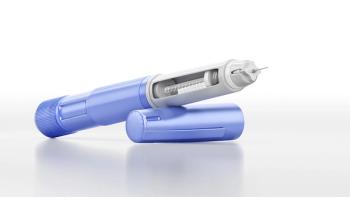
- BioPharm International-09-01-2017
- Volume 30
- Issue 9
Manufacturing Standards Key to Advancing Cellular and Gene Therapies
FDA works with industry on strategies for assuring high-quality regenerative medicines.
Amid mounting excitement over remarkable efficacy rates for new genetically modified cellular therapies, regulators and manufacturers alike face continuing challenges for ensuring consistent potency, purity, and identify of these complex therapies. More than 100 experimental chimeric antigen receptor T-cell (CAR-T) therapies are in development, generating optimism that regenerative medicine will transform treatment and lead to cures for many deadly diseases. Such advances, though, require further clarification of regulatory policies governing gene therapy production and quality assurance.
FDA is considering at least three CAR-T applications, and more are on the way. An FDA advisory
Regulatory initiatives
FDA will address these regulatory developments further in a comprehensive framework for oversight of regenerative medicine slated for publication in September 2017. This will be part of a comprehensive Innovation Initiative, Commissioner Scott Gottlieb
FDA’s Center for Biologics Evaluation and Research (CBER) is implementing this program, including a RMAT designation process to identify experimental advanced therapies that warrant special attention and advice from FDA. Gottlieb noted in early July 2017 that manufacturers have filed nearly two dozen requests for RMAT designation, and that CBER’s Office of Tissues and Advanced Therapies (OTAT) had granted four. Similar to FDA support for breakthrough therapies, the RMAT designation offers early interactions with FDA staff and the potential for priority review and accelerated approval based on strong preliminary clinical evidence. CBER Director Peter Marks and other FDA officials applaud the RMAT program established in Cures for providing FDA with flexibility in evaluating these cutting-edge products, including the ability to accept a variety of endpoints for RMAT clinical trials.
Quality control challenges
The larger issue for regulators is to ensure consistency in critical quality attributes (CQAs) for identity and purity of these products, a task that has prompted FDA and a number of research organizations to collaborate on setting standards and methods for defining and characterizing these complex therapies and for conducting assays able to measure performance. A Forum on Regenerative Medicine established in 2016 by the National Academies for Science, Engineering, and Medicine (NASEM) is addressing these issues as part of its broader examination of the state of science and strategies for facilitating development of therapies able to generate, repair, or replace patients’ tissues. A June 2017 workshop on “Navigating the Manufacturing Process and Assuring the Quality of Regenerative Medicine Therapies” discussed challenges in evaluating the quality and purity of unique cell populations. The
The federal government’s National Institute of Standards and Technology (NIST) is
FDA’s Oncologic Drug Advisory Committee meeting on July 11, 2017 to evaluate Novartis’ CAR-T therapy, tisagenlecleucel-T, addressed difficulties in dealing with variability in the potency and other quality measures related to gene therapy production. From the outset, FDA reviewers said that efficacy was not an issue due to overwhelming patient response to treatment, and that safety would involve long-term post-market assessment. But the experts sought assurance of security, accuracy, and reliability for Novartis’ complex system for removing blood T-cells from the patient, cryopreserving them for transport to a company processing facility, and shipping transduced T-cells back to the clinic for re-injection into the patient.
FDA’s staff
These issues were explored further at the July 2017
Experts from biopharma companies and research organizations discussed the importance of advanced analytics in evaluating product consistency and purity and in avoiding process variations. They debated the relevance of quality standards set by the International Council for Harmonization (ICH) and how well quality-by-design concepts can help understand and manage change. There were many questions about dealing with variability in raw materials, evaluation of stability, and addressing unique supply chain issues.
Bryan Silvey, senior director for quality compliance at Kite Pharma, emphasized that personalized cell therapy production, utilizing a “one lot-one patient” manufacturing platform with a 15-day rapid manufacturing cycle and “a new world of cold chain” transport, must provide a high level of assurance that the patient receives back the correct cells as quickly as possible. Anne Plant, division chief for biosystems and biomaterials at NIST, observed that comparability assessment is key to determining that changes in a production process do not undermine quality and safety, but that such measurements are difficult to define.
Mohammad Heidaran, CMC reviewer in CBER’s OTAT, described manufacturing challenges for cellular therapies related to cell variability, lack of reference standards, small lot sizes, limited material for testing, and an often poor understanding of the product. Comparability protocols are important for managing change and can benefit from FDA input on the design and risk that a change poses for product quality. He advised manufacturers to “know your product,” including CQAs and critical process parameters, and to conduct a full risk assessment that links all these factors to product quality.
References
1. PharmTech, “Novartis CAR-T Cell Therapy CTL019 Recommended for FDA Approval,”
2. S. Gottlieb, “How FDA Plans to Help Consumers Capitalize on Advances in Science,” FDAVoice,
3. NASEM,
4. NIST, Regenerative Medicine Biomanufacturing,
5. FDA,
6. Novartis, “
7. CASSS,
Article Details
BioPharm International
Vol. 30, No. 9
September 2017
Page 8
Citation
When referring to this article, please cite it as J. Wechsler, "Manufacturing Standards Key to Advancing Cellular and Gene Therapies," BioPharm International 30 (9) 2017.
Articles in this issue
over 8 years ago
The Role of the Quality Unitover 8 years ago
Using Simulation to Address Capacity Limitationsover 8 years ago
The Human Cost of Congressional Stalematesover 8 years ago
Singular Developments Advance TFF Technologyover 8 years ago
Glass or Plastic? Container Material Choicesover 8 years ago
Real-Time Logisticsover 8 years ago
The Immune Context in Microbiological Testingover 8 years ago
Impact of Media Components on CQAs of Monoclonal Antibodiesover 8 years ago
Top Trends in Biopharmaceutical Manufacturing, 2017over 8 years ago
Bioburden Control in the Biopharmaceutical IndustryNewsletter
Stay at the forefront of biopharmaceutical innovation—subscribe to BioPharm International for expert insights on drug development, manufacturing, compliance, and more.




